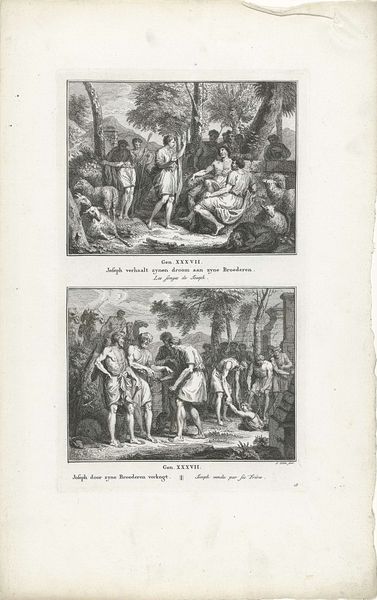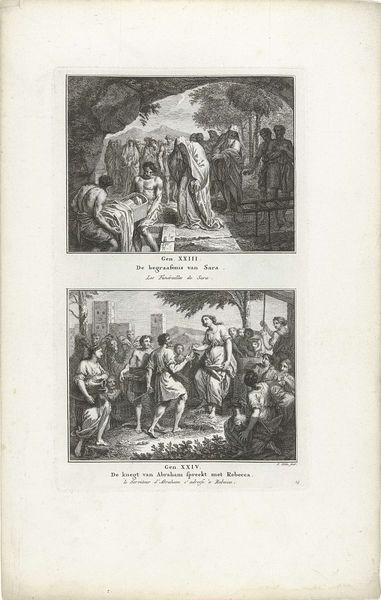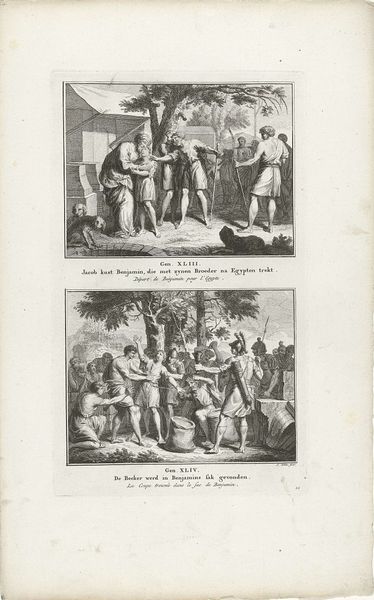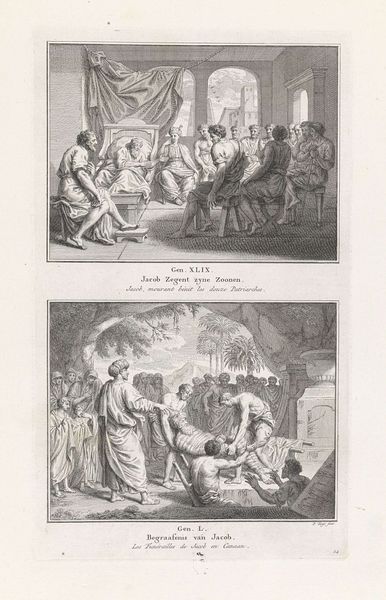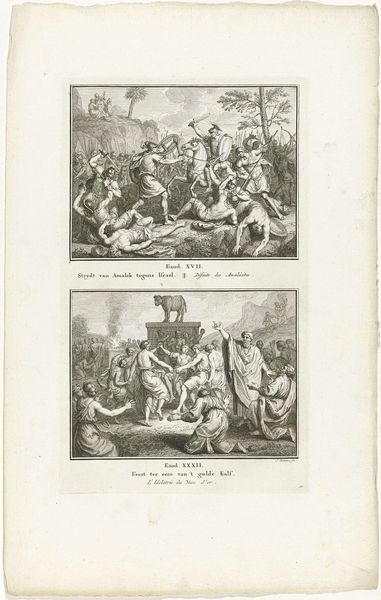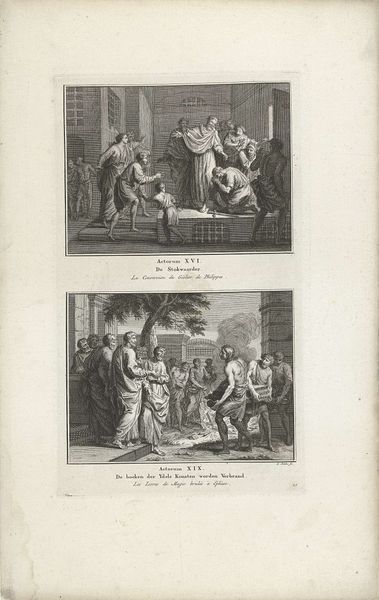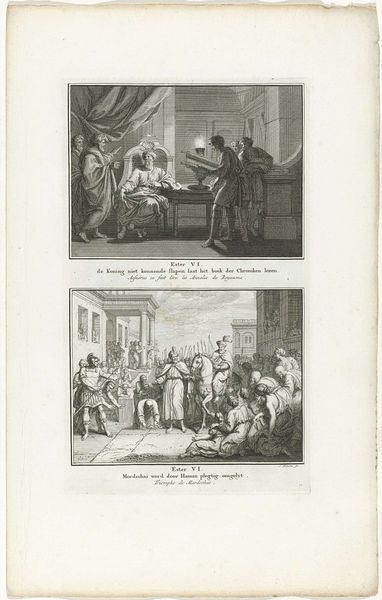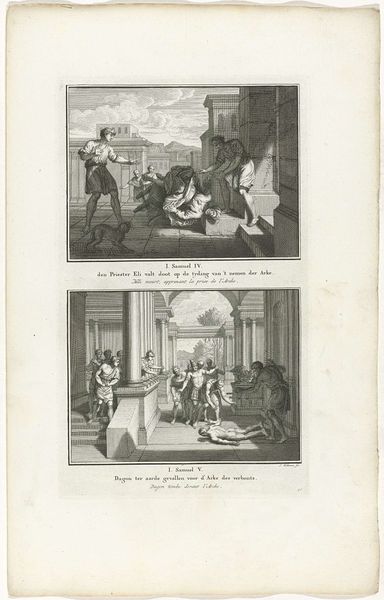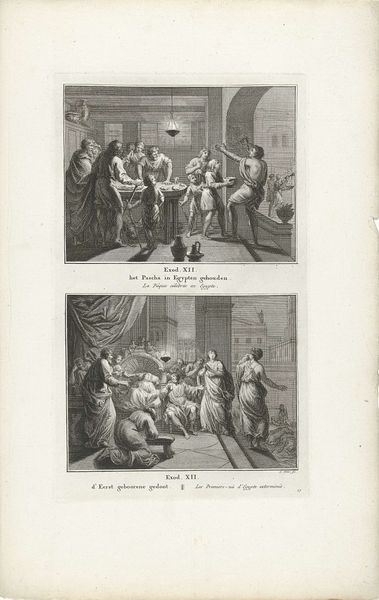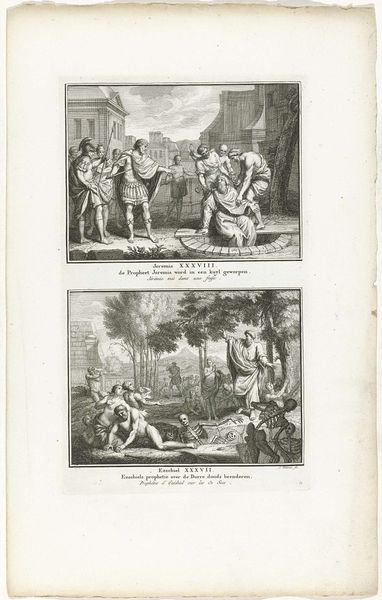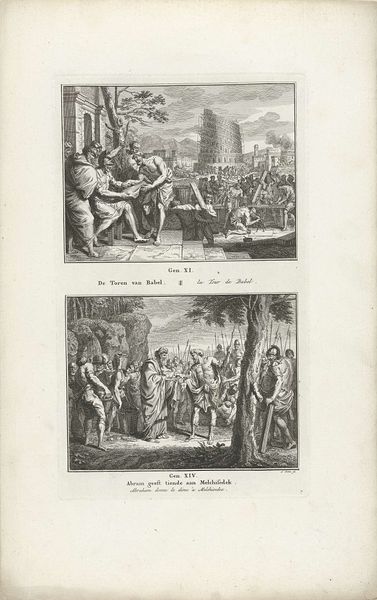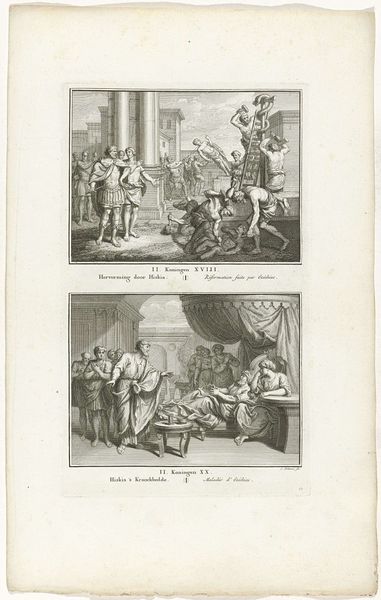
Jozef verzamelt koren in Egypte en de zonen van Jakob vinden hun geld in zakken 1791
0:00
0:00
Dimensions: height 326 mm, width 195 mm
Copyright: Rijks Museum: Open Domain
Editor: This engraving by Simon Fokke, made in 1791, is titled "Joseph Gathers Grain in Egypt and Jacob’s Sons Find Their Money in Sacks." The intricate details are remarkable. I'm struck by how these biblical stories are framed almost like theatrical scenes. What stands out to you, especially considering the period it was made? Curator: It’s fascinating to view this piece through the lens of its time. Consider the Dutch Republic's historical context during the late 18th century – a period marked by political and economic shifts. Fokke, as an engraver, operated within a specific print culture. The decision to illustrate these biblical scenes in this particular manner speaks to the public role art served then. It wasn't just about religious devotion, but about disseminating moral lessons and cultural values. Do you see how the composition reinforces a specific social order? Editor: I think so. There's a clear hierarchy in the first scene, with Joseph elevated, almost like a ruler. And the emphasis on the narrative feels like a way to legitimize power through storytelling. Curator: Exactly. Engravings like this weren't simply artistic expressions; they were potent instruments shaping public perception and reinforcing existing societal norms. Who was buying and viewing this image, and where might they display it? That helps unlock what cultural work this piece was doing in the world. Editor: So, it's about considering the gallery space as much as the artistic skill involved? Curator: Precisely. Fokke's work allows us to glimpse the intricate relationship between art, politics, and the collective identity of the Dutch Republic during a crucial period of transition. It gives "meaning" to the print itself. Editor: That's a fresh perspective I had not previously thought of. Thanks. I definitely see how vital historical context is to unpack the purpose this art may have served for those viewing it.
Comments
No comments
Be the first to comment and join the conversation on the ultimate creative platform.
